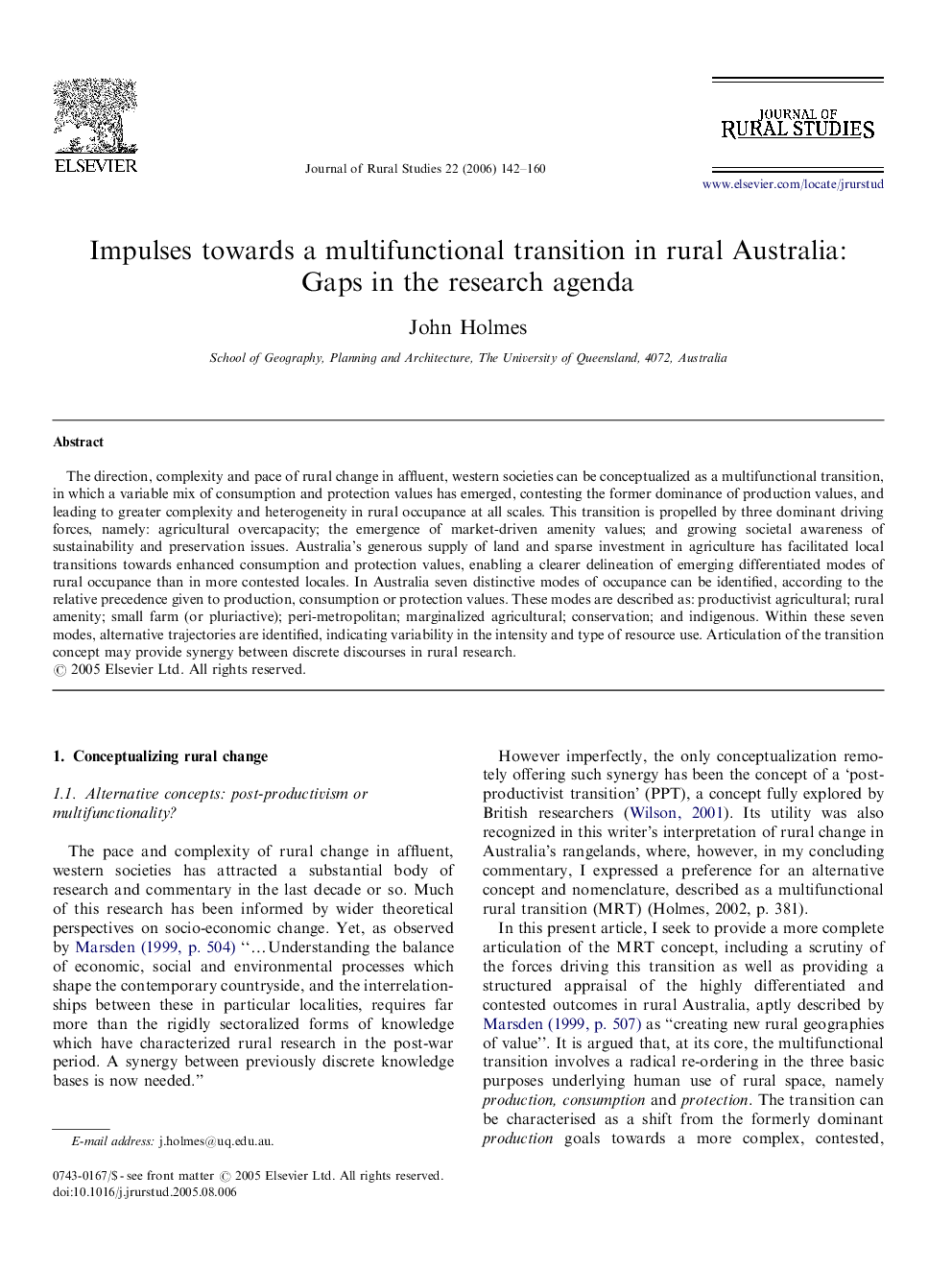| Article ID | Journal | Published Year | Pages | File Type |
|---|---|---|---|---|
| 92852 | Journal of Rural Studies | 2006 | 19 Pages |
The direction, complexity and pace of rural change in affluent, western societies can be conceptualized as a multifunctional transition, in which a variable mix of consumption and protection values has emerged, contesting the former dominance of production values, and leading to greater complexity and heterogeneity in rural occupance at all scales. This transition is propelled by three dominant driving forces, namely: agricultural overcapacity; the emergence of market-driven amenity values; and growing societal awareness of sustainability and preservation issues. Australia's generous supply of land and sparse investment in agriculture has facilitated local transitions towards enhanced consumption and protection values, enabling a clearer delineation of emerging differentiated modes of rural occupance than in more contested locales. In Australia seven distinctive modes of occupance can be identified, according to the relative precedence given to production, consumption or protection values. These modes are described as: productivist agricultural; rural amenity; small farm (or pluriactive); peri-metropolitan; marginalized agricultural; conservation; and indigenous. Within these seven modes, alternative trajectories are identified, indicating variability in the intensity and type of resource use. Articulation of the transition concept may provide synergy between discrete discourses in rural research.
